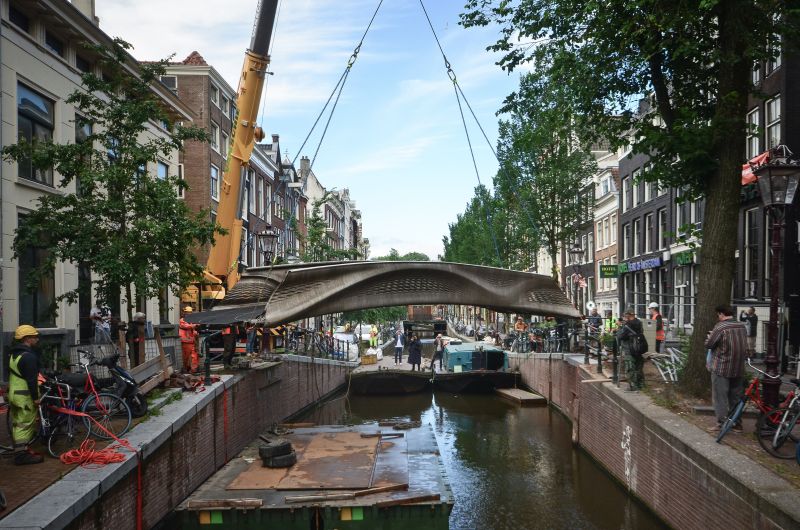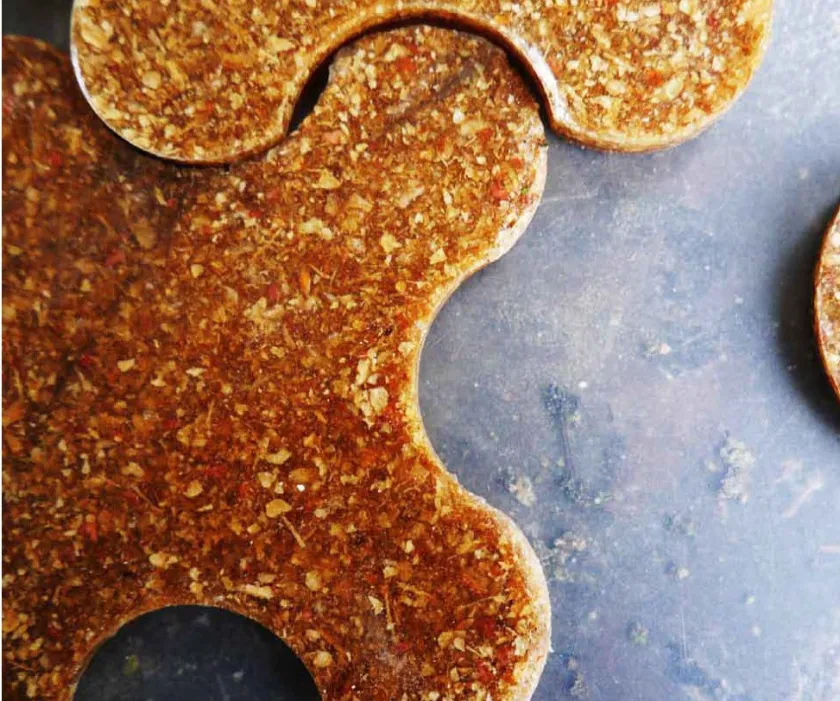The 2023 Technology, Industry, People, and Economics (TIPE) Conference of Women in 3D Printing (Wi3DP) not only served as a crucial venue for amplifying marginalized voices in the additive manufacturing (AM) sector, but also tracking and driving progress in the industry. This meant that, alongside the People track that underscored the importance of the human element in 3D printing, the other portions showcased the developments driven by those people.
Chief among these developments, in my mind, were additive construction (AC) and sustainability, as well as AM for production. There were several, sometimes coinciding or consecutive, talks dedicated to these topics that appealed to me in particular, including “Developing a Circular Framework for 3D Printing Housing with Wood waste,” “Large Format 3D-printing for Construction,” “Production AM for Critical Applications,” and “Sustainability of Carbon Fiber Reinforced Plastic (CFRP) in Additive Manufacturing,” among others that I will discuss in a series of articles.
Additive Construction and the Labor Force
AC is currently being proposed as a solution to the affordable housing crisis, something about which I maintain some skepticism. That isn’t to say that it might not have a massive impact on housing and prices, overall, but that it seems to only be addressing the issue at a surface level.
When I read about one particular AC project performed by Apis Cor in the UAE, it occurred to me that, despite the claims of AC companies, the technology may actually be meant to gain leverage over manual labor. In that country in particular, construction jobs are most often filled by foreign workers who are more easily subject to abuse and may strike for better living standards. It is no surprise then that Dubai aims to make one-quarter of its buildings 3D printed by 2025. Meanwhile, in countries like the United States, the construction sector has been able to gain leverage at the negotiating table through historically powerful unions. Automation in both cases can serve to reduce the power of the laborers in setting their own wages and rights.

Vittoria Laghi participated in the MX3D Bridge project, installed in Amsterdam. Image courtesy of MX3D.
When asked about this issue, Deena El-Mahdy, Assistant Professor in the Architectural Engineering Department at the British University in Egypt, noted that the impact that AC will have on the labor market will depend on where it is deployed in the world. For instance, in Europe, the machinery may be less expensive than labor compared to Egypt, where the relationship is inverted. She agreed that the benefits of the technology, such as the ability to construct something quickly without any formwork, have to be balanced with the potential drawbacks.
Vittoria Laghi—a lecturer at Massachusetts Institute of Technology, research fellow at Structural Design Department of University of Bologna in Italy and visiting researcher at TU Braunschweig in Germany—highlighted the safety benefits of AC, saying that robotics could be used to perform dangerous tasks that human laborers shouldn’t be forced to contend with. Moreover, she echoed a point made by El-Mahdy that AC would help improve the skill level of the work force.
“I think that [robotics will increase] the need for higher education and will spread across more you operational schools—or the collaboration between human and robot [will be taught in middle school] on. So, it will become something maybe like really within our society and not more something to be afraid of,” Laghi said.
This is actually an issue that is not addressed in these specific terms in the 3D printing industry. AM actually demands a more skilled workforce to build, operate, and design for advanced manufacturing equipment. At the same time, there are countless initiatives in place to educate young people to address this skill gap. However, will this skill gap be addressed adequately, how many workers will be left behind in the process, and will some of those workers be automated out of a job? It’s a nuanced situation and there isn’t a one-to-one ratio between training versus employing a skilled workforce.
Sustainability in Construction 3D Printing and Other Topics
Other topics discussed by the panel included issues related to regulations and the mainstreaming of AC, which are highly related, as Deena El-Mahdy pointed out. There are numerous demonstrator projects that have been completed, which showcase the potential of the technology, which in turn drives industry adoption, necessitating regulation. She highlighted Dubai’s efforts to push the technology as a sort of global showcase that will see other countries then adopt it.
Additionally, they discussed the environmental factors related to AC, as well as interesting possibilities for facades in mitigating the environment surrounding a building. The group advocated for the use of construction 3D printing to reduce the environmental impact of construction, not just in terms of using less material but also by relying on more eco-friendly materials, such as earth, clay, and salt.
This tied directly into a presentation on “Developing a Circular Framework for 3D Printing Housing with Wood waste,” from University of Idaho researchers Carolina Manrique Hoyos, Associate Professor of Architecture, and Mallory Buscemi, Graduate Research Assistant. Thanks to a National Science Foundation grant, the school’s Cradle to Cradle Design Team is exploring the 3D printing of housing using wood waste in a fully circular manner.
 , Made up of architects, structural engineers, mechanical engineers, and more, the Cradle to Cradle Design Team established PrinTimber to combine bio-based resin with sawdust to establish a variety of processes for 3D printing wood products. Together with researchers from Auburn University, the University of Idaho group will, according to the PrinTimber website:
, Made up of architects, structural engineers, mechanical engineers, and more, the Cradle to Cradle Design Team established PrinTimber to combine bio-based resin with sawdust to establish a variety of processes for 3D printing wood products. Together with researchers from Auburn University, the University of Idaho group will, according to the PrinTimber website:
- “fractionate and characterize (via spectroscopy) bio-oils, chemically transform the oils into resins, and incorporate nanofibrillated cellulose to improve their properties
- develop additive manufacturing technology that is compatible with thermosetting type wood/bio-resin composites, incorporate reinforcing agents, such as biochar and long natural fibers, evaluate the properties of the composites via rheometry, thermal analysis, and spectroscopy, and 3-D print prototype building wall panels for evaluation
- evaluation, simulate, and predict composite material performance through ASTM tests, and incorporate fire and durability test data into neural network models to optimize material performance
- promote housing construction market transformation toward more resilient building paradigms by developing resilience assessment tools for the architecture, engineering and construction industry and municipalities, and to develop curricular and pedagogical strategies for education these stakeholders”
The project has just completed the first year of a four-year grant, with students in the program exploring various possibilities, such as using 3D printing to repair homes, relying on regenerative materials like algae, and capturing carbon. Though sustainability wasn’t an explicit track at the TIPE event, it was a theme that could be found across presentations, including one that will be discussed in more depth in a follow-up post, “Sustainability of Carbon Fiber Reinforced Plastic (CFRP) in Additive Manufacturing.”
Subscribe to Our Email Newsletter
Stay up-to-date on all the latest news from the 3D printing industry and receive information and offers from third party vendors.
You May Also Like
3D Printing News Briefs, April 13, 2024: Robotics, Orthotics, & Hypersonics
In 3D Printing News Briefs today, we’re focusing first on robotics, as Carnegie Mellon University’s new Robotics Innovation Center will house several community outreach programs, and Ugogo3D is now working...
Rail Giant Alstom Saves $15M with 3D Printing Automation Software 3D Spark
3D Spark has entered into a three-year deal with the rail giant Alstom. Alstom, a transport behemoth with annual revenues of $16 billion, specializes in the manufacture of trains, trams,...
Meltio Expands Global Reach with New Partnerships in the Americas and Europe
Spanish 3D printing manufacturer Meltio has expanded its sales network across the globe. With the addition of three new partners in the United States, Brazil, Argentina, and Italy, Meltio aims...
3D Printing Webinar and Event Roundup: April 7, 2024
Webinars and events in the 3D printing industry are picking back up this week! Sea-Air-Space is coming to Maryland, and SAE International is sponsoring a 3D Systems webinar about 3D...

































